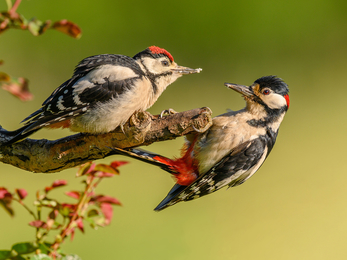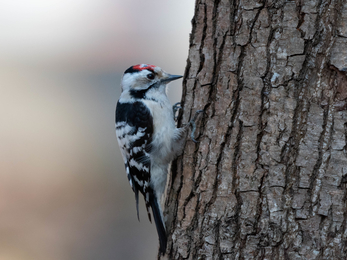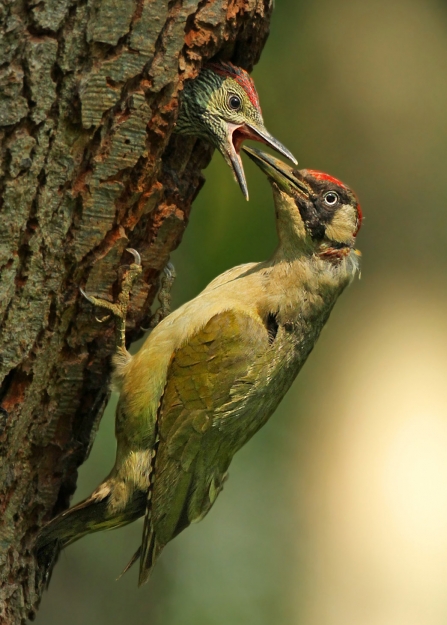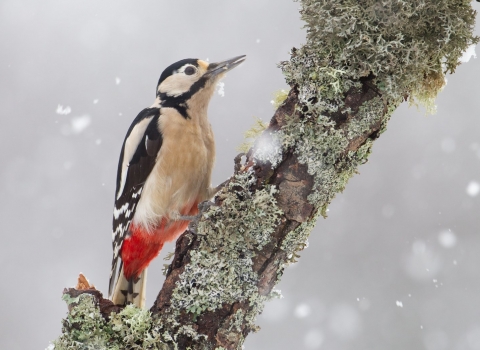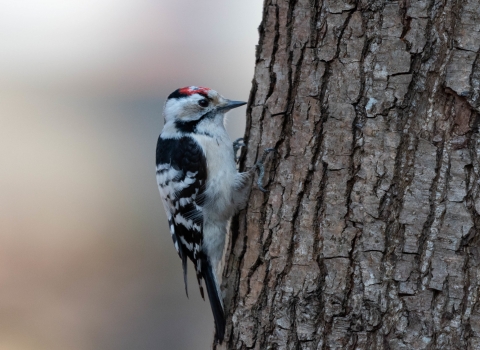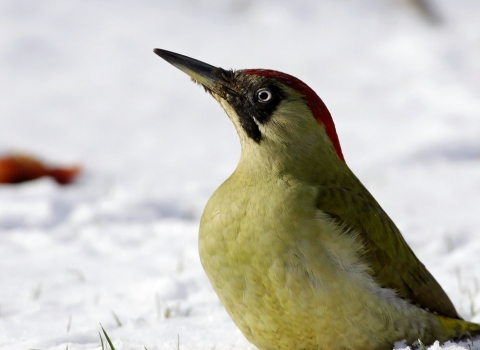One regular visitor of my garden bird feeders has been the great spotted woodpecker. I noticed one coming down to to visit my peanut feeder and to munch on my sunflower seeds most days whilst being at home during lockdown. I have also regularly noticed more than one at once, showing they are likely nesting and breeding nearby.
The great spotted woodpecker is one of three woodpecker species we have in the UK, the other two being the lesser spotted woodpecker and the green woodpecker. The great and lesser spotted woodpeckers are very similar in appearance, with distinct black and white colouring on their feathers. The main difference between the two is that the lesser spotted is a lot smaller, and it is much less common. If you spot either of these, you should be able to determine the gender of the adults, as males will have a patch of red on their heads at the nape of their neck, whereas the females will not. Juveniles, however, may possess a red crown that covers the whole head.

